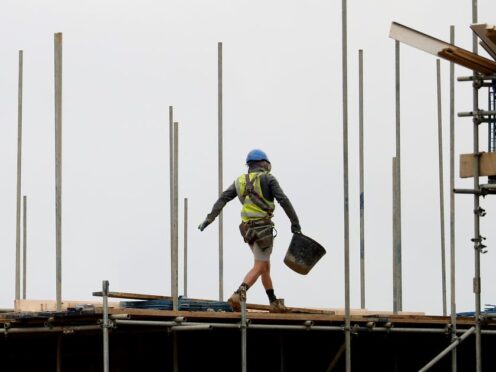
Labour has pledged to “get Britain building again”, creating jobs across England, with 1.5 million new homes over the next parliament.
The party’s General Election manifesto document commits it to immediately update the National Planning Policy Framework “to undo damaging Conservative changes, including restoring mandatory housing targets”.
Labour said it will support local authorities by funding additional planning officers.
It pledged to ensure local communities continue to shape house building in their area – “but where necessary Labour will not be afraid to make full use of intervention powers to build the houses we need”.
Labour said it will take a “brownfield first” approach but it added that brownfield development alone will not be enough to meet housing needs.
It said Labour will take a “more strategic approach” to greenbelt land designation.
The document added: “In partnership with local leaders and communities, a Labour government will build a new generation of new towns, inspired by the proud legacy of the 1945 Labour government.”
Labour pledged to “deliver the biggest increase in social and affordable house building in a generation”, strengthening planning obligations to ensure new developments provide more affordable homes as well as supporting councils and housing associations.
The document said: “Labour will prioritise the building of new social rented homes and better protect our existing stock by reviewing the increased right to buy discounts introduced in 2012 and increasing protections on newly built social housing.”
Lizzy Galbraith, a political economist at abrdn, said housing targets such as those set out by Labour “are very ambitious – even with planning reform”.
Nathan Emerson, chief executive at property professionals’ body Propertymark, said: “The planning process can be a huge obstacle in keeping pace with demand and change is desperately needed in order to serve an ever-growing population.
“Many buyers have had a tough time since the 2008 recession, and it is vital any future strategy includes a sustainable mix of affordable housing options for both buyers and renters.
“Propertymark would like to see more details from Labour about how they plan to meet their housing goals and ensure there is a firm and fair set of policies in place to serve all demographics.”
Tim Bannister, Rightmove’s property expert, said: “The next government has an opportunity to improve some fundamental aspects of the housing market.
“The process of buying and selling a home needs to be sped up and simplified – it is currently taking seven months on average from coming to market, to completing a home purchase, which is painfully slow.”
He said that an imbalance between supply and demand has significantly worsened since 2019, adding: “There needs to be more support for quicker and quality house building, to alleviate some of the supply and demand pressures.
“If the next government can create smoother planning processes to transform the delivery of new homes and produce more affordable housing, it could also help downsizers move to greener homes with lower running costs.”
Mark Booth, co-founder of SME house builder Hayfield, said that “tweaking the current system isn’t enough”.
He added: “We need to find a solution that incentivises local planning authorities to deliver housing in all areas of the country.”
Polly Neate, chief executive of Shelter, said: “To fuel the economy, people need the foundation of a decent home. Labour’s commitment to the biggest increase in social housing in a generation is bold and desperately needed – to deliver real change we need 90,000 genuinely affordable social homes a year.”
Labour promised to abolish immediately section 21 “no fault” evictions, prevent private renters from being exploited and discriminated against and empower them to challenge unreasonable rent increases.
Ms Neate added: “With Labour and every major party committed to ending no fault evictions, the next government now has a strong mandate to rapidly reform renting – making it safer, secure and more affordable – no ifs, no buts.”
Dan Wilson Craw, deputy chief executive of Generation Rent, said that as well as the commitment to end section 21 evictions: “It is good that the manifesto recognises the various other ways renting isn’t working, including discrimination, exploitation, poor standards and rent increases, but we have little detail of what action the party would take.
“Too many tenants are forced out of their home by unaffordable rent rises so any new protections must help tenants stay put.”
Ben Beadle, chief executive of the National Residential Landlords Association (NRLA), said: “All of the main parties are committed to ending section 21. What matters is ensuring the replacement system works, and is fair, to both renters and responsible landlords.”

Enjoy the convenience of having The Sunday Post delivered as a digital ePaper straight to your smartphone, tablet or computer.
Subscribe for only £5.49 a month and enjoy all the benefits of the printed paper as a digital replica.
Subscribe